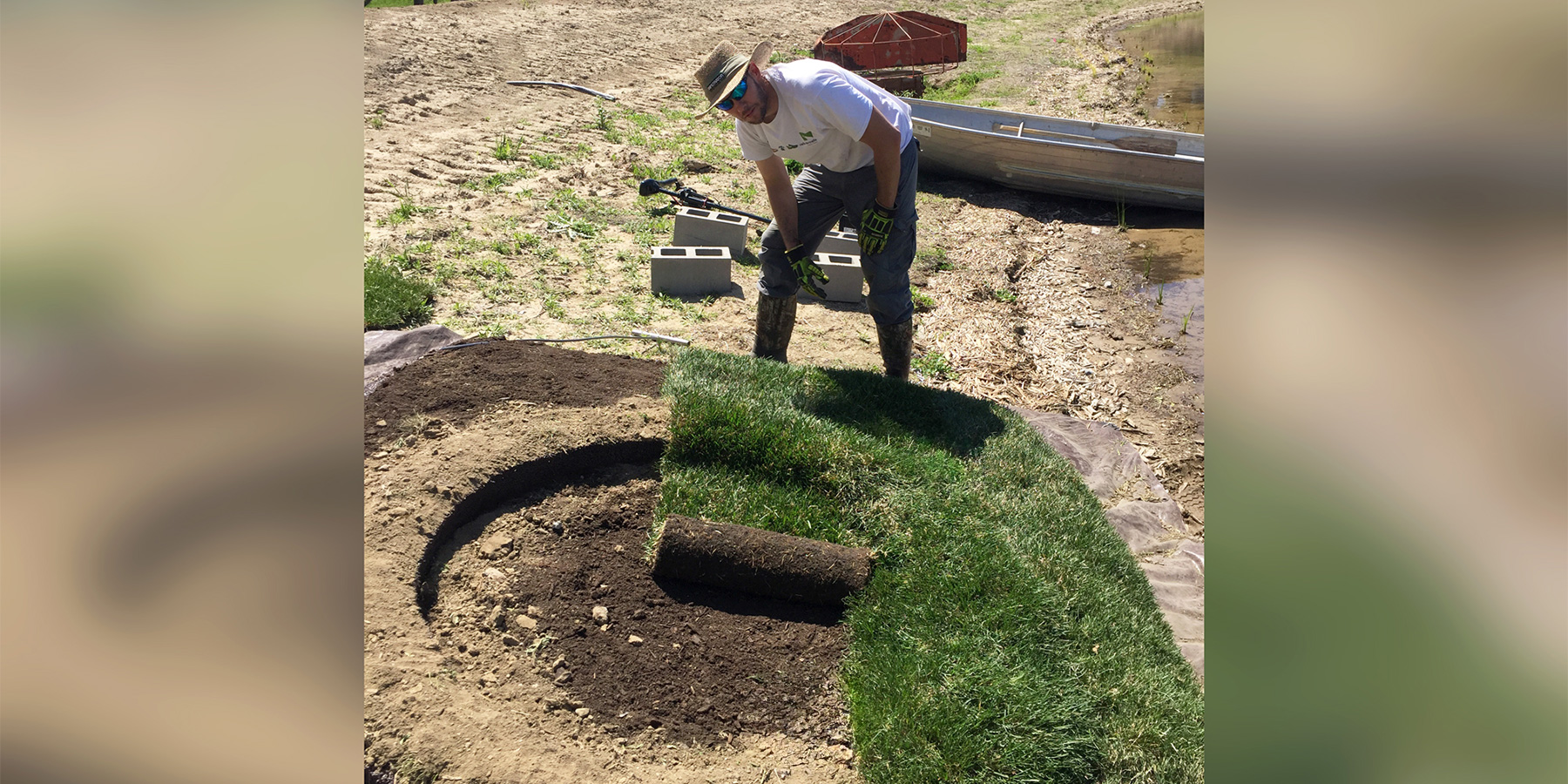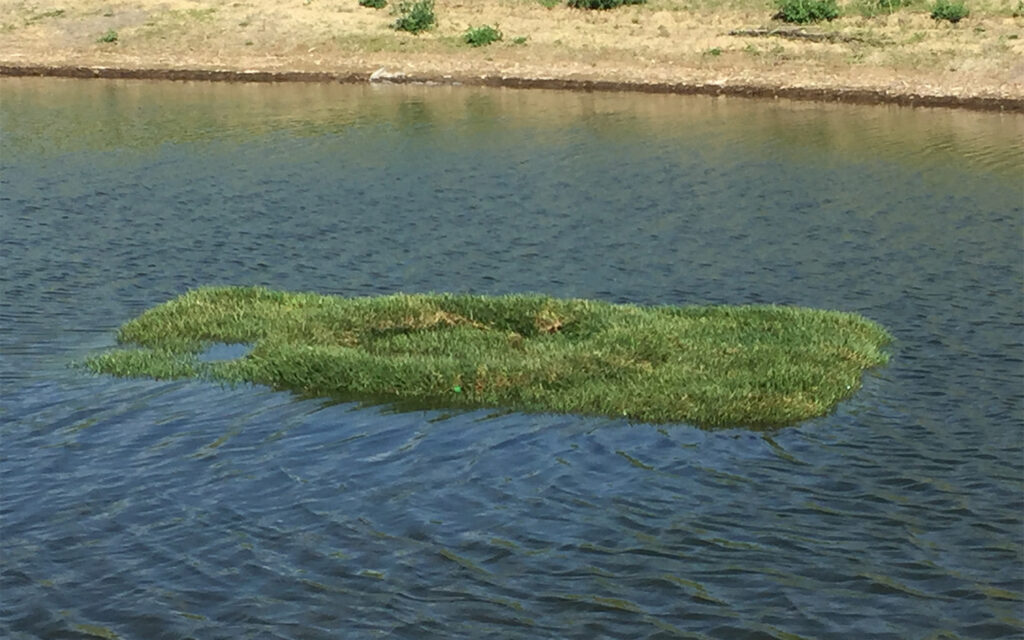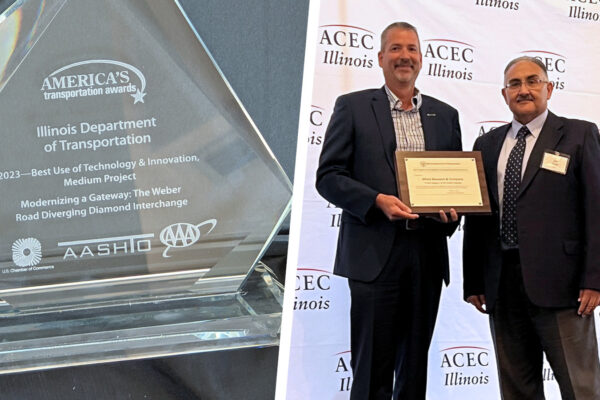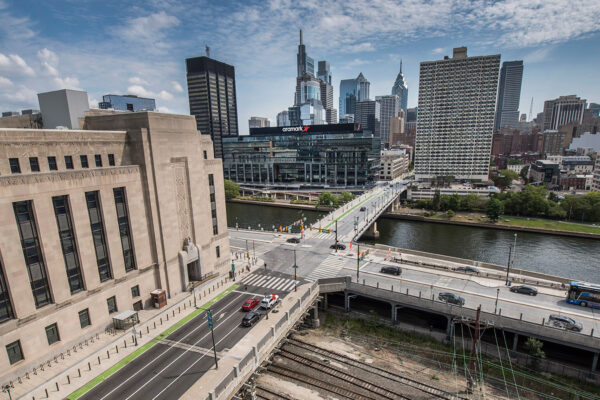Floating Islands Another Way of Going Green

Advancements and changing trends in green infrastructure continue to shape how projects meet environmental requirements, as well as offer options for owners to meet their own sustainability goals. When it comes to projects involving bodies of water, floating islands offer a range of benefits by utilizing this relatively new green technology. Benesch’s Omaha Division recently completed a floating island project for a private client who wanted to provide a nesting habitat for waterfowl. David Nelson, CWB® and Certified Island Master for Floating Island International, designed and installed the island.
“Floating islands are cost effective solutions for clients who want to enhance the natural beauty of their property as well as provide habitat and other environmental advantages such as surface water nutrient removal, treatment of waterborne bacteria such as E. coli, fish habitat enhancement and shoreline protection,” Nelson said.
A client’s objectives for installing a floating island could be one of a myriad of reasons: habitat management, wetland restoration, water quality, stormwater treatment or wave mitigation erosion control, among others. Most new commercial and residential developments require some form of surface water quality filtering system. Often this is accomplished with small retention ponds, even large lakes. A number of developers are incorporating floating islands in retention cells to improve water quality as well as remove possible contaminants.
Recycled plastic bottles make up the base of the island, also called a matrix, making it buoyant, weatherproof and waterproof. The plastic also prevents it from breaking down over time. “The durability of the recycled plastic matrix creates a permanent solution that translates into a long-term return on investment,” according to Nelson.

Omaha Floating Island for Trumpeter Swan
Prior to launch, the island is planted with a variety of wetland plants or sod. Frogs, turtles, birds, bees and butterflies are attracted to the island habitat. Yet another benefit of the island’s surface is its function of breaking up waves that have the potential to exacerbate shoreline erosion. Islands can be any size, but even a small island with a 250 square-foot matrix can have a big impact; those 250 square-feet offer a significance equivalent to one acre of wetland.
The porous cavities of the matrix offer a home to a diversity of microorganisms and beneficial bacteria. Their consumption of nutrients along with their ability to break down pollutants and suspended solids improve water quality considerably. In a way, the islands function like floating water treatment systems.
Island benefits also extend beneath the matrix. First, shading of the water below helps cool the water and enhance the fish habitat. In addition, roots of the plants serve as habitat for fish and other organisms as well as a filtering system aiding in the removal of pollutants and other toxins in the water.
Floating islands can be incorporated into projects at any time, including post-construction. They offer solutions in any instance where improved water quality, wetlands restoration, shoreline protection, beautification or habitat diversification are among the project goals. Benesch is excited to offer this unique expertise to our clients, and stay at the forefront of green infrastructure and technology.
Project Benefits:
- Green technology
- Recycled plastic bottle base
- Habitat management
- Wetland & lake restoration
- Water quality
- Stormwater treatment
- Wave mitigation/erosion control










